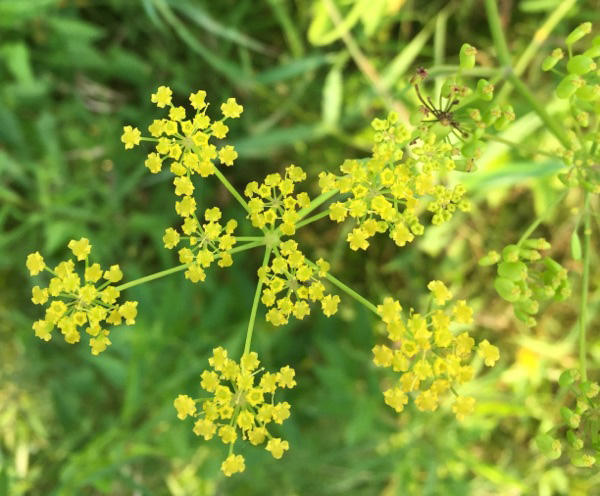
The yellow petals remain tightly curled against the side of the flowers. Wild Parsnip has 12-35, 5-petaled, small yellow flowers. The basal leaves are pinnately compound with 5-15 leaflets with the base of the leaf stalk wrapping around the grooved stem. The noxious weed has a grooved stalk that can reach up to 5 feet. There are some key differences in correctly identifying Wild Parsnip. Goldenrods have tansy foliage that is pinnately divided and the flowers have ray petals surrounding central, disk-like florets. The flower contains compound umbels of numerous 5-parted, yellow flowers. Golden alexanders reach 1-2 feet tall and have smooth shiny stems that produce compound basal leaves. Wild Parsnip is commonly confused with two Minnesota natives: Golden alexanders and Goldenrods.
#WILD PARSNIP FULL#
It usually grows in dry soil with full to partial sun needed. Wild Parsnip usually finds its habitat on roadsides and abandoned fields or lots. Correctly identifying wild parsnip is key to controlling and reporting it to the Minnesota Department of Agriculture. Report the infestation to iMapInvasives (leaves DEC website).įor more information, you can contact DEC Forest Health at 84, or your local Partnership for Regional Invasive Species Management (PRISM) (leaves DEC website).In the 1990s, the non-native plant, Wild Parsnip was first discovered in Minnesota and landed itself on the Minnesota Noxious Weed List due to its aggressive spread and physical harm to humans.Note the location (intersecting roads, landmarks or GPS coordinates).Take a picture of the entire plant and close-ups of the leaf, flower and/or seed.If you believe you have found wild parsnip: There are no state or federal removal programs for wild parsnip in New York State, but infestations may be reported to New York iMapInvasives (leaves DEC website) to add to the state's collection of invasive species location data. General herbicides can be applied as spot treatments to new shoots. Some plants may re-sprout, making it necessary to mow the area again. Mowing wild parsnip after flowers have bloomed but before seeds have developed can kill the plants. Leave the bags out in the sun for one week to kill the seed heads before disposal. If removing plants after seeds have already developed, cut off the seed heads and put them in plastic bags. Cutting roots 1-2 inches below the soil or pulling plants by hand should be done before they have gone to seed.
#WILD PARSNIP MANUAL#
Manual removal of plants can be effective for small areas. If you are interested in removing wild parsnip on your own property, please be sure to wear long sleeves and pants as well as gloves and avoid any contact with the sap of the plant. There are no state or federal programs to remove wild parsnip in New York State because the plant is so widespread across much of New York. Avoid areas where seed is present to prevent its accidental spread on clothing and equipment. When using equipment where wild parsnip is present, make sure to clean it thoroughly before using it again in an area that is parsnip-free. It is important to remove new infestations while they are still small and not well established.
#WILD PARSNIP SKIN#
#WILD PARSNIP HOW TO#
How to protect yourself from wild parsnip


This reaction, known as phytophotodermatitis, can also cause discoloration of the skin and increased sensitivity to sunlight that may last for years. Brushing against or breaking the plant releases sap that, combined with sunlight, can cause a severe burn within 24 to 48 hours. Wild parsnip sap contains chemicals called furanocoumarins which can make skin more vulnerable to ultraviolet light. DEC encourages the public to report sightings of this invasive plant to iMapInvasives (leaves DEC website). It is common in the United States and Canada and is widespread in New York. Wild parsnip can be found growing in a broad range of habitats, especially along roadsides, in fields and in pastures.


 0 kommentar(er)
0 kommentar(er)
